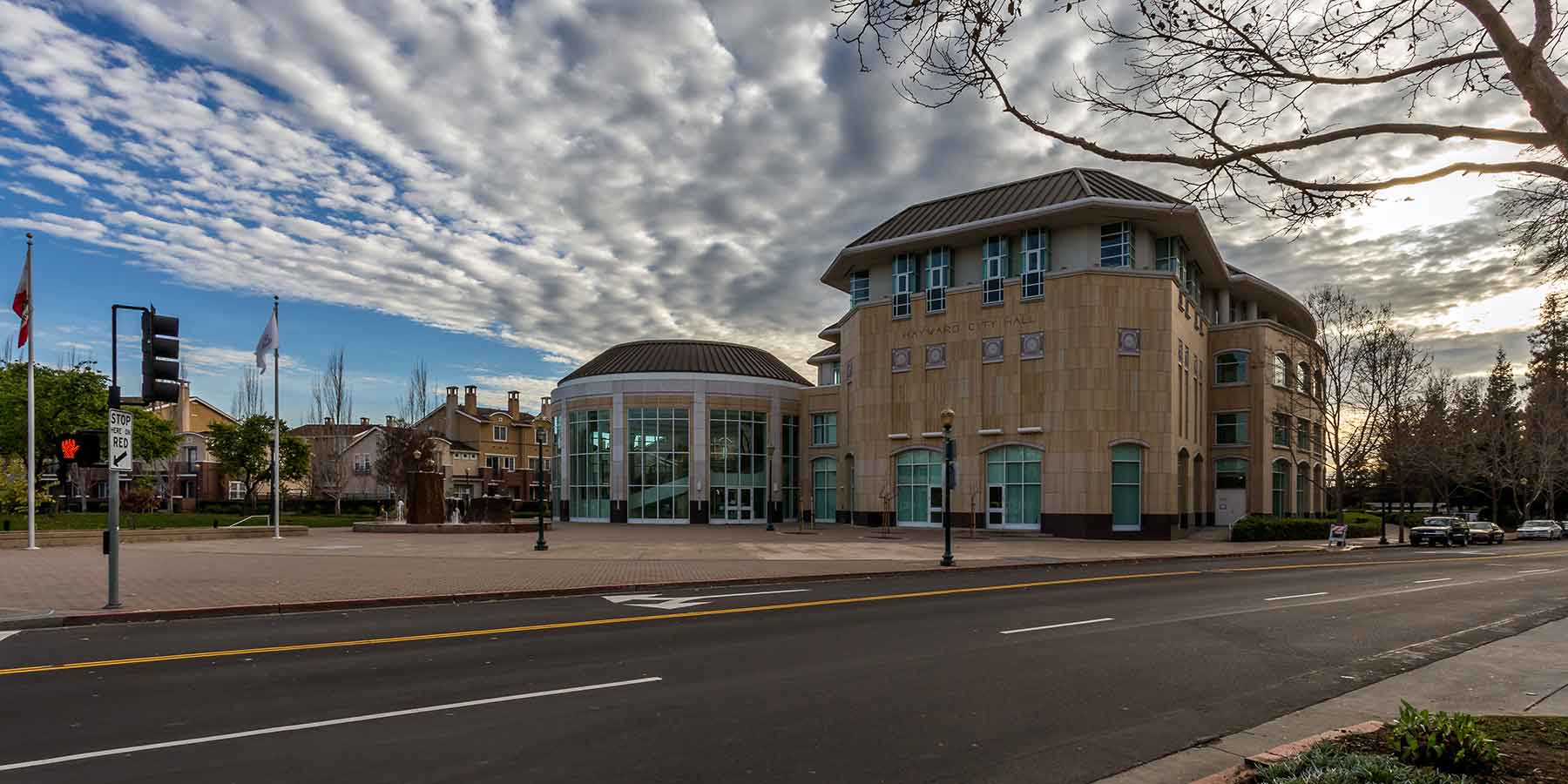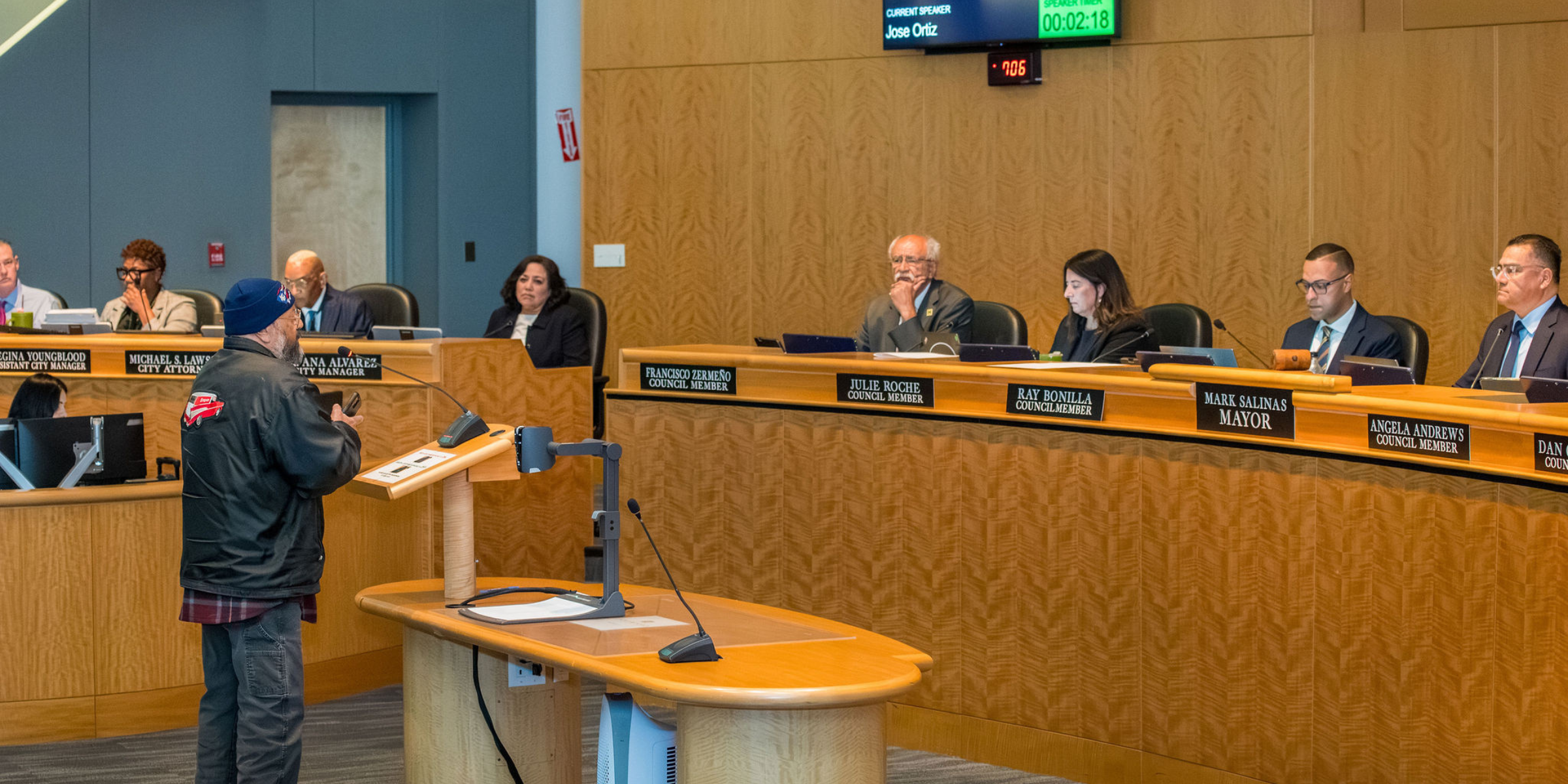Community Safety Element

Community safety is one of the top challenges and priorities of Hayward. Like most urban communities in the San Francisco Bay Area, Hayward’s safety challenges range from protecting people and property from crime, to responding to fires, medical emergencies, and natural disasters. The City recognizes that safety concerns, both real and perceived, have a major impact on the health, economic viability, and quality of life of the community. To achieve its full potential, the City will need to improve community safety and diligently work to enhance the image of Hayward.
The Community Safety Element contains goals and policies that are designed to improve community safety by enhancing the programs and services of the Hayward Police Department and Hayward Fire Department. The goals and policies focus on crime prevention, police protection services, fire prevention, fire and emergency medical services, and disaster preparedness, response, and recovery. The goals and policies recognize that the Police Department and Fire Department are not solely responsible for the safety of Hayward. Rather, the City recognizes that community safety is the responsibility of all members of the Hayward community and that partnerships and collaboration between the City, residents, businesses, and neighborhood and community organizations are key factors to improving the safety and well-being of the community.
Several other Elements of the General Plan provide supporting goals and policies related to community safety, including the Education and Lifelong Learning Element, Economic Development Element, Land Use and Community Character Element, Community Health and Quality of Life Element, and Hazards Element.
Goal CS-1: Strengthen partnerships with the Hayward community to develop strategies and solutions that prevent crime.
In general, three factors come together when a crime occurs: a criminal, a target (either a person or property), and an opportunity to commit the crime with a relatively low risk of getting caught. Crime prevention strategies are generally designed to remove (or reduce) one or more of the three factors. For example, the number of criminals can be reduced, not only by arrests and prosecutions, but also by intervention programs that direct at-risk youth and adults towards positive activities and opportunities. The number of targets can be reduced by educating people about how to avoid dangerous situations, such as going out alone at night, parking in an unsupervised area, and leaving valuable belongings in a car. Opportunities to commit crime can also be reduced by increasing human activity on streets and public spaces, and by siting and designing buildings to allow people to monitor outside activity. Technology, such as surveillance cameras and alarms, can aid in crime prevention by increasing the criminal’s perceived risk of getting caught. This goal and its supporting policies are designed to promote a safer community by developing community partnerships and strategies to prevent crime. The policies are specifically designed to prevent crime by reducing one or more of the three factors of crime (criminal, target, or opportunity).
Additional policies that can help prevent crime are also provided in other elements of the General Plan, especially the Health and Quality of Life Element, the Economic Development Element, and the Education and Lifelong Learning Element.
CS-1.1: Community Partnerships:
The City shall coordinate with residents, businesses, schools, park districts, and community and neighborhood organizations to develop and expand partnerships to prevent crime. [Source: New Policy, City Staff; GPUTF; Public]
CS-1.2: Crime Prevention Programs:
The City shall maintain and consider new Police Department programs that support residents and businesses in their efforts to prevent crime and improve neighborhood safety, such as Hayward Neighborhood Alert, Neighborhood Watch, Business Watch, Crime Free Multi-Housing Program, and Synchronized Multi-Agency Safe Housing (SMASH).
CS-1.3: Gang Intervention Programs:
The City shall coordinate with school districts to maintain and further develop Police programs, services, and strategies that keep children and teens out of gangs and involved in positive activities.
CS-1.4: Gang Enforcement Strategy:
The City shall maintain a comprehensive gang enforcement strategy, including a gang-injunction program, to reduce gang activity throughout the city.
CS-1.5: Services for At-Risk Youth:
The City shall coordinate with school districts to provide services that help at-risk youth escape the path of crime, such as on-site counseling, crisis intervention services, emergency hotlines, case management services, job and internship opportunities, and recreation programs.
CS-1.6: Recreation and After-School Programs:
The City shall coordinate with park districts, youth organizations, faith-based organizations, and community centers to provide recreation and after-school programs that deter children and young adults from crime and foster a greater sense of civic engagement.
CS-1.7: Crime Awareness Campaigns:
The City shall coordinate with schools, colleges, businesses, and neighborhood and community groups to develop, promote, and/or sponsor awareness campaigns about various crimes, including burglaries, child abuse, bullying, domestic violence, sexual assault, human trafficking, fraud, and identity theft.
CS-1.8: Cyber Safety:
The City shall coordinate with local school districts, parent-teacher organizations, and community centers to educate residents (especially children and seniors) about the dangers they could encounter on the and how to avoid them.
CS-1.9: Crime Prevention Through Environmental Design:
The City shall continue to include the Police Department in the review of development projects to promote the implementation of principles.
CS-1.10: Lighting:
The City shall encourage property owners to use appropriate levels of exterior lighting to discourage criminal activity, enhance natural surveillance opportunities, and reduce fear.
CS-1.11: Technology:
The City shall encourage and support the use of technology (such as private surveillance cameras, deployed public camera systems, theft-prevention devices, emergency call boxes, alarms, and motion-sensor lighting) to discourage crime.
CS-1.12: On-Site Security:
The City shall require conditions of approval related to the provision of on-site security and safety measures for bars, nightclubs, live entertainment businesses, and related uses. Conditions of approval shall promote a healthy balance of public safety and nightlife vibrancy, and may include surveillance cameras, crowd management practices, and on-site security staff.
CS-1.13: Park Security and Safety:
The City shall coordinate with the Hayward Area Recreation and Park District (HARD) and East Bay District (EBRPD) to address crime and safety concerns within Hayward parks.
CS-1.14: Coordination of Homeless Services:
The City shall coordinate with community organizations to develop and maintain a comprehensive system of services to alleviate homelessness, panhandling, and related public safety concerns.
CS-1.15: Blight, Litter, Graffiti, Illegal Dumping and Abandoned Vehicles:
The City shall maintain and implement programs that address conditions that foster crime or the fear of crime, such as blight, litter, graffiti, illegal dumping, and abandoned vehicles.
CS-1.16: Immigrant Outreach Programs:
The City shall develop outreach programs to help break down cultural barriers that discourage immigrants from contacting the police to report crimes and public safety concerns.
Goal CS-2: Provide exceptional police protection services to promote a safe and secure community.
The quality of the City’s Police Department and its relationship with the community has a direct impact on Hayward’s overall safety, security, and quality of life. This goal and its supporting policies are designed to enhance the services of the Hayward Police Department and to create stronger community partnerships. The policies address staffing levels, training, police facilities and equipment, and community relations.
CS-2.1: Community Policing Strategies:
The City shall promote community policing strategies that support community partnerships and problem-solving techniques that build public trust and proactively address public safety issues.
CS-2.2: Police Strategic Plan:
The City shall maintain and implement a Police Department Strategic Plan to:
- Set near-term goals for the Department in response to a dynamic and changing environment.
- Align police services with the community’s desires and expectations.
- Accurately assess the operational needs of the Police Department to best serve the Hayward community.
CS-2.3: Police Staffing:
The City shall maintain optimum staffing levels for both sworn police officers and civilian support staff in order to provide quality police services to the community.
CS-2.4: Response Time for Priority 1 Calls:
The City shall strive to arrive at the scene of Priority 1 Police Calls within 5 minutes of dispatch, 90 percent of the time.
CS-2.5: Police Equipment and Facilities:
The City shall ensure that Police equipment and facilities are provided and maintained to meet modern standards of safety, dependability, and efficiency.
CS-2.6: Police Facilities Master Plan:
The City shall maintain and implement a Police Department Facilities Master Plan that serves as the long-term plan for providing the Police Department with state-of-the-art equipment and facilities, including police headquarters, police substations, training facilities, detention facilities, shooting ranges, and emergency operations centers.
CS-2.7: Police Training:
The City shall ensure that Police officers have access to state-of-the-art training programs and professional development opportunities.
CS-2.8: Cross Training:
The City shall increase cross training among disciplines in the Police Department so that short-term personnel needs and service gaps can be filled by internal staff.
CS-2.9: Culture Competency Training:
The City shall ensure that all officers receive comprehensive cultural competency training to better serve the needs of Hayward’s diverse population.
CS-2.10: Cooperative Delivery of Services:
The City shall coordinate with local, State, and Federal law enforcement agencies to maintain mutual aid agreements and to promote local and regional cooperation in the delivery of law enforcement services to the city and the unincorporated areas within the City’s .
CS-2.11: School Security and Safety:
The City shall collaborate with local school districts to study and implement measures that enhance the security of schools and the safety of students, teachers, and administrators.
CS-2.12: Prosecution Coordination:
The City shall coordinate with the Alameda County District Attorney’s office to improve collaboration and communication between prosecutors and the Hayward Police Department.
CS-2.13: Community Facilities Districts:
The City shall consider the establishment of community facilities districts to ensure that new development does not constrain the City’s ability to provide adequate police services to the Hayward community.
CS-2.14: Development Fees:
The City shall consider the establishment of development impact fees to help fund Police Department operations.
CS-2.15: Police Communications:
The City shall consider the development of a comprehensive Police communication program to inform residents of crimes, investigations, and emergencies. Communication methods may include text messaging, social media postings, telephone and cellular phone messaging, television and radio alerts, and website postings.
Goal CS-3: Prevent fires by conducting routine inspections, incorporating fire safety features in new development, and educating the public to take proactive action to minimize fire risks.
With an aging stock of residential, commercial, and industrial buildings, Hayward is a community that will likely experience more structural fires in the future. This goal and its supporting policies are designed to protect life and property by preventing structural fires in the Hayward community. Fire prevention is accomplished by minimizing fire risks through education, routine inspections, and requiring building renovations and new construction to comply with fire access and building codes.
Additional policies related to the prevention of wildland fires are provided in the Hazards Element.
CS-3.1: Fire Prevention Education:
The City shall maintain and implement a fire prevention and safety education program for Hayward residents and businesses. The program shall be directed primarily at high-risk population groups, such as seniors and young children.
CS-3.2: Fire and Building Codes:
The City shall adopt and enforce fire and building codes.
CS-3.3: Development Review:
The City shall continue to include the Fire Department in the review of development proposals to ensure projects adequately address fire access and building standards.
CS-3.4: Adequate Water Supply for Fire Suppression:
The City shall require new development projects to have adequate water supplies to meet the fire-suppression needs of the project without compromising existing fire suppression services to existing uses.
CS-3.5: Water Supply Infrastructure:
The City shall require development to construct and install fire suppression infrastructure and equipment needed to serve the project.
CS-3.6: Fire Inspections:
The City shall maintain its fire inspection program for commercial, industrial, and multi-family residential buildings in compliance with the requirements of State law.
CS-3.7: Removal of Fire Hazards:
The City shall maintain code enforcement programs that require private and public property owners to minimize fire risks by:
- Maintaining buildings and properties to prevent blighted conditions,
- Removing excessive or overgrown vegetation (e.g., trees, shrubs, weeds), and
- Removing litter, rubbish, and illegally dumped items from properties.
Goal CS-4: Provide coordinated fire protection and emergency medical services to promote a safe and healthy community.
The quality of the City’s Fire Department and emergency medical services has a direct impact on Hayward’s overall health, safety, and quality of life. This goal and its supporting policies are designed to enhance the fire protection and emergency medical services of the Hayward Fire Department. The policies address a variety of issues, including staffing levels, emergency response times, training, fire facilities and equipment, and coordination with ambulance service providers and hospitals.
CS-4.1: Fire Strategic Plan:
The City shall maintain and implement a Fire Department Strategic Plan to:
- Set near-term goals for the Department in response to a dynamic and changing environment.
- Align fire and emergency medical services with the community’s desires and expectations.
- Accurately assess the operational needs of the Fire Department to best serve the Hayward community.
CS-4.2: Fire Department Staffing:
The City shall maintain optimum staffing levels for sworn, civilian, and support staff, in order to provide quality fire protection and emergency medical services to the community.
CS-4.3: Fire Department Response Times:
The City shall maintain the ability to respond to fire and emergency medical calls based on the following standards:
- The first unit shall arrive on scene within five minutes of dispatch, 90 percent of the time.
- All remaining units shall arrive on scene within 8 minutes of dispatch.
CS-4.4: Timing of Services:
The City shall ensure that growth and development does not outpace the expansion of Hayward Fire Department staffing and the development of strategically located and fully equipped fire stations.
CS-4.5: Station Call Volumes and the Reallocation of Resources:
The City shall monitor call volumes at individual fire stations to determine if certain areas of the City are in high demand of fire and emergency medical services. The City shall consider reallocating resources (fire units and/or equipment) or building new fire stations to serve high demand areas.
CS-4.6: New Fire Stations:
The City shall ensure that new fire stations are strategically placed to provide optimum response times throughout the Hayward community.
CS-4.7: Fire Facilities Master Plan:
The City shall develop, maintain, and implement a Fire Department Facilities Master Plan that serves as the long-term plan for providing the Fire Department with state-of-the-art equipment and facilities.
CS-4.8: Fire and Paramedic Training:
The City shall ensure that firefighters and paramedics have access to state-of-the-art training and professional development opportunities.
CS-4.9: Cooperative Delivery of Services:
The City shall maintain mutual aid agreements and coordinate with local, State, and Federal fire agencies to promote regional cooperation in the delivery of services.
CS-4.10: Investment in Technology:
The City shall invest in technology that enhances the City’s ability to deliver emergency medical response, fire-rescue, and fire protection services more efficiently and cost-effectively.
CS-4.11: Community Facilities Districts:
The City shall consider the establishment of community facilities districts to ensure that new development does not constrain the City’s ability to provide adequate fire services to the Hayward community.
CS-4.12: Development Fees:
The City shall consider the establishment of development impact fees to fund Fire Department operations.
CS-4.13: Ambulance Services:
The City shall consider the enhancement of the Advanced Life Support Medical Service capabilities of the Hayward Fire Department by expanding ambulance services to include Basic Life Support Transport Services.
CS-4.14: Emergency Medical Services:
The City shall encourage the expansion of emergency medical services offered at local hospitals and urgent care clinics.
CS-4:15: Center for Public Safety Excellence:
The City shall seek recognition by the Center for Public Safety Excellence by improving the service of the Hayward Fire Department.
Goal CS-5: Prepare the Hayward community for future emergencies and disasters to minimize property damage, protect and save lives, and recover as a resilient community.
Hayward is located in an area that is susceptible to a variety of potential disasters, including earthquakes, landslides, coastal flooding, and wildland fires. Preparing for disasters and having pre-planned policies to coordinate a strategic response is not only important for government agencies, but also for local residents and businesses. Preparedness ensures that government agencies, residents, and businesses have the necessary equipment and resources to stay safe during a disaster and to survive without regular services (such as water and electricity) during the following phase of recovery. This goal and its supporting policies are designed to prepare residents and businesses for disasters, and to ensure that the City of Hayward and other government agencies are ready to respond to protect lives and property during an emergency.
Related policies that discuss potential development in hazardous areas of the City are provided in the Hazards Element.
CS-5.1: Public Education:
The City shall provide public education to promote citizen awareness and preparedness for self-action in case of a major disaster or emergency.
CS-5.2: Neighborhood Preparedness Tools and Resources:
The City shall provide neighborhood organizations with emergency preparedness tools and resources (such as Map Your Neighborhood) to increase community capacity and self-sufficiency after a disaster.
CS-5.3: Emergency Preparedness Kits:
The City shall encourage all residents (including college students, nursing home residents, and group home residents) to prepare and maintain emergency kits with enough supplies to be self-sufficient for three to seven days.
CS-5.4: Community Emergency Response Training:
The City shall maintain and further develop its volunteer-based Community Response Team (CERT) and related emergency response training programs, and establish a leadership structure within the volunteer community to coordinate with during a disaster.
CS-5.5: Emergency and Disaster Drills:
The City shall coordinate with local and regional jurisdictions, schools and colleges, businesses, and community organizations to conduct emergency and disaster preparedness exercises that test operational and emergency response plans. The City shall incorporate energy and water disruptions and shortages into the drills.
CS-5.6: Comprehensive Emergency Management Plan:
The City shall maintain and implement a Comprehensive management Plan to:
- Outline the City of Hayward's responsibilities in emergencies.
- Coordinate the response and recovery efforts of City Departments, local energy providers, and local, State, and Federal agencies.
- Establish procedures for the Operation Center (EOC).
CS-5.7: Energy Assurance Plan:
The City shall develop, maintain, and implement a citywide Energy Assurance Plan that documents the energy needs of critical City and community facilities and functions, establishes goals and actions to increase energy resiliency during disasters, and prioritizes the use of renewable energy or other sustainable technologies to reduce dependency on the grid during power outages.
CS-5.8: Emergency Operations Center:
The City, in conjunction with other local, State, and Federal agencies, shall ensure operational readiness of the Operations Center (EOC) by conducting annual training for staff, and maintaining, testing, and updating equipment to meet current standards. The City shall incorporate energy and water disruptions and shortages into the training and testing exercises.
CS-5.9: New Emergency Operations Center:
The City shall strive to establish a stand-alone Operations Center.
CS-5.10: Mutual Aid Agreements:
The City shall continue to participate in mutual aid agreements to ensure adequate resources, facilities, and other support for emergency response.
CS-5.11: Mass Communications Device:
The City shall maintain and regularly upgrade its mass communications systems to effectively notify people during disasters and emergencies by using current communication technologies.








